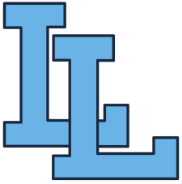What is STEM?
STEM was first coined by the National Science Foundation in the early 1990’s and is applied to any policy, event, curriculum, or education program dealing with Science, Technology, Engineering, and Mathematics. STEM curriculums strive to prepare students for the challenges of the 21st century.
Who can take STEM Academy classes?
The Pathway to Engineering first-year class, Engineering Essentials (EES), is designed for freshmen. Any openings left will be to our general student population to take as an elective. The second year class is Introduction to Engineering Design (IED). This is intended for the sophomores coming out of EES. Principles of Engineering (POE) and Aerospace Engineering (AE) are the other two classes offered in the LLHS STEM Academy and reserved for juniors and seniors. After re-enrollment in the STEM Academy, any openings left will be made available to our general student population as an elective.
Why should I consider the STEM Academy for my teen?
STEM classes are designed to challenge students who have an interest in STEM fields and are highly motivated to learn. Students will be challenged academically with the goal of giving them the greatest opportunity for success in postsecondary STEM programs and STEM careers. In addition, students in STEM classes will be encouraged to enroll in other rigorous course offerings, including Physics, Calculus, and AP courses.
Is the STEM Academy only meant for students going into computer science, medical, science, math or engineering careers?
A PLTW alum and now an EE student in college shares, "I think PTLW serves its purpose well: a moderate depth intro to the engineering field/mindset, and some major fields within it. The purpose isn’t to teach everything, or even most things, but to engage students with STEM in a more hands-on way, and give them time to experiment and work with professional-ish tools to learn the absolute basics. It is largely the stuff you might cover in the first quarter or semester of classes actually in each field, but abstracting away a lot of the math and physics that explains it all.
Someone once described it as ‘an inch deep and a mile wide’ and that seems pretty apt."
What curriculum is used?
Project Lead the Way (PLTW) has developed and used the curriculum worldwide over the last 16 years. Schools using the PLTW curriculum must also partner with local industries and businesses. Part of the PLTW curriculum requires LLHS to partner with local industries and also work to find mentors to students in the program. When they have questions about future courses of study, college programs, internships, or challenges in the classroom, the people and businesses LLHS will partner with will be there with experience to guide the students.
How does STEM fit in the academic day?
STEM is an elective. Students who take a STEM class or enroll as freshmen in the STEM Academy still have to take the math and science classes required to graduate.
What do I need to do to possibly earn college credit?
Families of students enrolled in the STEM Academy can work with our Guidance office regarding course planning, college credit application, and postsecondary and career planning.
PLTW ENGINEERING
See course descriptions under the "STEM Academy" heading here
My teen is not in STEM Academy this year. Did they lose the chance to take STEM classes later on?
STEM students will have priority in course registration for STEM classes next year. However, we are willing to take 20 students in a STEM class and will fill remaining seats with qualified applicants.
How does applying for the STEM Academy affect my course selection?
When you register for classes in the PowerSchool portal, you will indicate you are applying to be in the STEM Academy. If you decide not to be in the STEM Academy or are not accepted, that class will be removed by the Guidance Office.
I don’t know if I want to be an engineer. Should I still take STEM?
Students benefit from STEM Academy courses even if they do not pursue engineering. The courses give a good exposure to different engineering fields, so they are useful in helping a student decide if that is the direction they want to go, but they also teach valuable skills such as problem solving, team-work, and professional skills.

